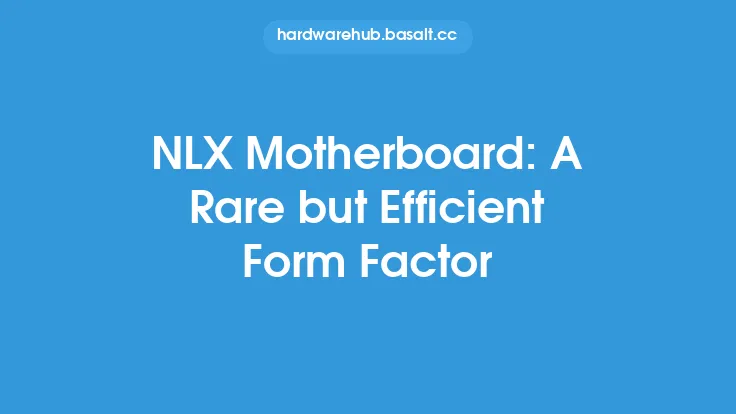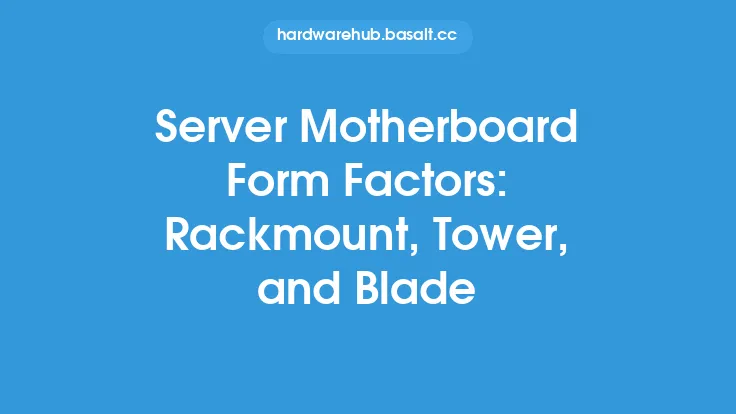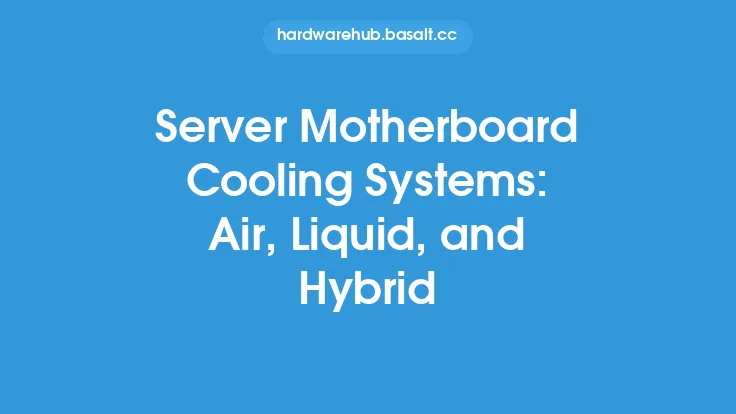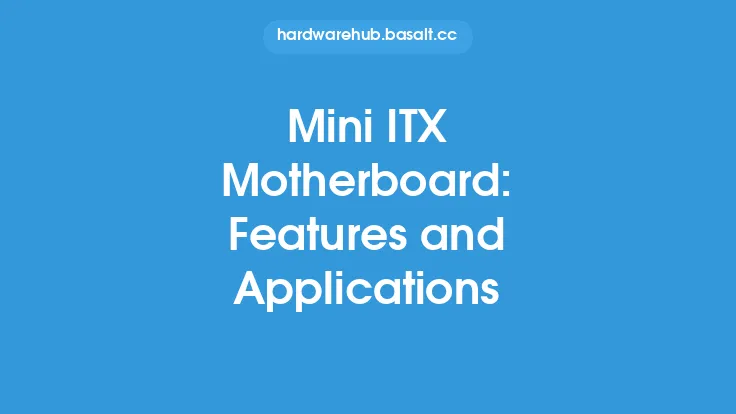The DTX motherboard form factor is a compact and efficient solution designed for small form factor systems. It was introduced by AMD in 2007 as a smaller alternative to the ATX form factor, with the goal of providing a more compact and power-efficient platform for desktop systems. The DTX form factor is designed to be compatible with the ATX form factor, allowing it to be used in existing ATX cases and with ATX power supplies.
Introduction to DTX Motherboard
The DTX motherboard form factor measures 244mm x 244mm, which is significantly smaller than the ATX form factor. Despite its smaller size, the DTX form factor still provides a high level of functionality and features, including support for multiple CPU cores, high-speed memory, and advanced graphics capabilities. The DTX form factor is also designed to be more power-efficient than the ATX form factor, with a focus on reducing power consumption and heat generation.
Key Features of DTX Motherboard
The DTX motherboard form factor has several key features that make it an attractive option for small form factor systems. These include:
- Support for multiple CPU cores: The DTX form factor supports a wide range of CPU cores, including dual-core and quad-core processors.
- High-speed memory: The DTX form factor supports high-speed memory, including DDR2 and DDR3 memory modules.
- Advanced graphics capabilities: The DTX form factor supports advanced graphics capabilities, including PCI Express x16 and PCI Express x1 slots.
- Power efficiency: The DTX form factor is designed to be more power-efficient than the ATX form factor, with a focus on reducing power consumption and heat generation.
- Compact size: The DTX form factor is significantly smaller than the ATX form factor, making it ideal for small form factor systems.
Technical Specifications of DTX Motherboard
The DTX motherboard form factor has several technical specifications that are worth noting. These include:
- Size: 244mm x 244mm
- Mounting holes: The DTX form factor uses the same mounting holes as the ATX form factor, making it compatible with existing ATX cases.
- Power supply: The DTX form factor uses the same power supply as the ATX form factor, making it compatible with existing ATX power supplies.
- CPU socket: The DTX form factor supports a wide range of CPU sockets, including Socket AM2, Socket AM2+, and Socket AM3.
- Memory slots: The DTX form factor typically includes 2-4 memory slots, depending on the specific motherboard model.
- Expansion slots: The DTX form factor typically includes 1-2 PCI Express x16 slots, 1-2 PCI Express x1 slots, and 1-2 PCI slots.
Advantages of DTX Motherboard
The DTX motherboard form factor has several advantages that make it an attractive option for small form factor systems. These include:
- Compact size: The DTX form factor is significantly smaller than the ATX form factor, making it ideal for small form factor systems.
- Power efficiency: The DTX form factor is designed to be more power-efficient than the ATX form factor, with a focus on reducing power consumption and heat generation.
- Cost-effectiveness: The DTX form factor is often less expensive than the ATX form factor, making it a cost-effective option for small form factor systems.
- Compatibility: The DTX form factor is compatible with existing ATX cases and power supplies, making it easy to upgrade or replace existing systems.
Disadvantages of DTX Motherboard
The DTX motherboard form factor also has several disadvantages that are worth noting. These include:
- Limited expansion options: The DTX form factor typically includes fewer expansion slots than the ATX form factor, which can limit the system's upgradeability and flexibility.
- Limited CPU support: The DTX form factor may not support all CPU models, which can limit the system's performance and upgradeability.
- Limited overclocking capabilities: The DTX form factor may not provide the same level of overclocking capabilities as the ATX form factor, which can limit the system's performance and flexibility.
Conclusion
In conclusion, the DTX motherboard form factor is a compact and efficient solution designed for small form factor systems. It provides a high level of functionality and features, including support for multiple CPU cores, high-speed memory, and advanced graphics capabilities. While it has several advantages, including compact size, power efficiency, and cost-effectiveness, it also has several disadvantages, including limited expansion options, limited CPU support, and limited overclocking capabilities. Overall, the DTX form factor is a good option for small form factor systems that require a compact and efficient platform.





